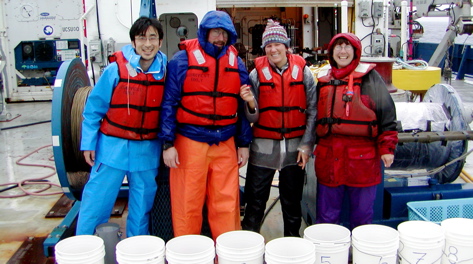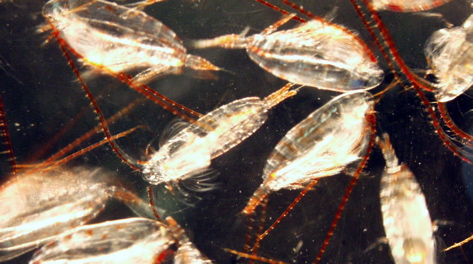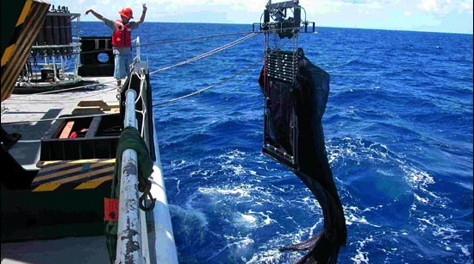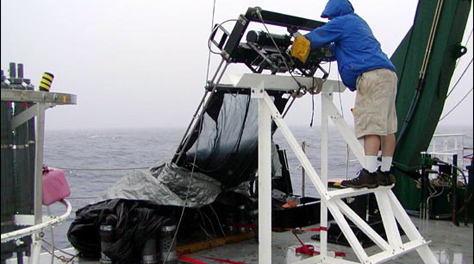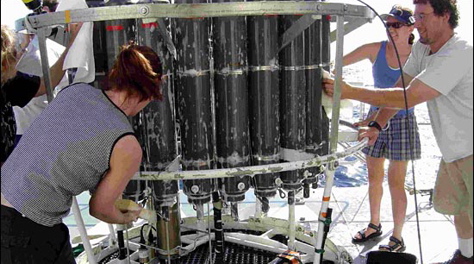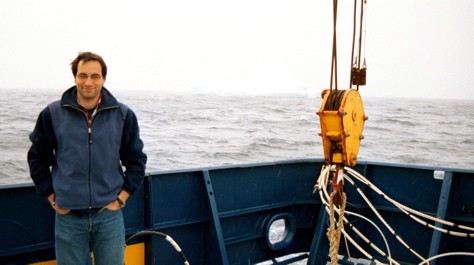Study shows VIMS professors on cutting edge
A new analysis of the worldwide scientific literature shows that Virginia Institute of Marine Science professors Deborah Steinberg and Jim Bauer are at the cutting edge of their respective fields.
The analysis, conducted as part of Thomson Reuters’ Essential Science IndicatorsSM, shows that Steinberg and Bauer’s work helps define a “research front”—a cluster of highly cited scientific papers in areas of emerging interest.
Thomson Reuters’ research-front analysis is based on identifying the most-cited papers in more than 11,000 scientific journals during the latest five-year period, and then determining how often these papers have been cited together by other research authors. According to the company, this process identifies areas where important work is being done and where the scientific community is focusing its attention.
Research-front analysis covers 22 scientific disciplines ranging from Agricultural Sciences to Biology & Biochemistry, Chemistry, Engineering, Environment/ Ecology, Geosciences, Immunology, Microbiology, Molecular Biology & Genetics, Physics, and Space Science.
Steinberg and Bauer were recognized for their contributions to a research front in the “Biological Effects of Ocean Chemistry.” This front has experienced the largest increase in journal articles within the geosciences this year.
Steinberg, a biological oceanographer, authored or co-authored four journal articles related to her on-going collaborative study of the ocean's "twilight zone"—the dim layer from 300 to 3,000 feet where little-known processes affect the ocean's ability to absorb and store carbon dioxide accumulating in our atmosphere. These articles have been cited by other scientific papers more than 60 times since their publication in 2007 and 2008.
Steinberg’s role in the multi-institution “VERTIGO” project was to identify plankton species living in the twilight zone and to understand differences in the food webs that propel the marine carbon cycle.
Bauer, a chemical oceanographer, was co-author of a paper reporting on the results of the Southern Ocean Iron Experiment, or SOFeX, one of the largest oceanographic experiments ever mounted. This paper has been cited 179 times since its 2004 publication in Science.
SOFeX, a 2-year collaborative effort among 17 leading U.S. oceanographic institutions, brought 3 ships and 45 tons of equipment and supplies to the waters around Antarctica to determine how the Southern Ocean would respond to iron enrichment. Sprinkling iron onto the ocean surface has been touted as one way to help curb global warming—based on the idea that this iron "fetilizer" can boost the rate at which marine plants remove carbon dioxide from the atmosphere. VIMS researchers Drs. Walker Smith and Hugh Ducklow and their graduate students were also involved in the SOFeX effort.
Steinberg and Bauer’s citation successes add to those of other VIMS researchers. An earlier analysis of articles published in coastal science journals between 1971 and 2003 showed that VIMS researchers Bob Diaz, Hugh Ducklow, and John Milliman had authored 3 of the 10 most highly cited works during that span.
"Having a publication cited by many other authors is a sure sign that your work has value," says VIMS Dean and Director John Wells. "VIMS is extremely proud that our scientists continue to have such a demonstrable impact on the global research community.”


